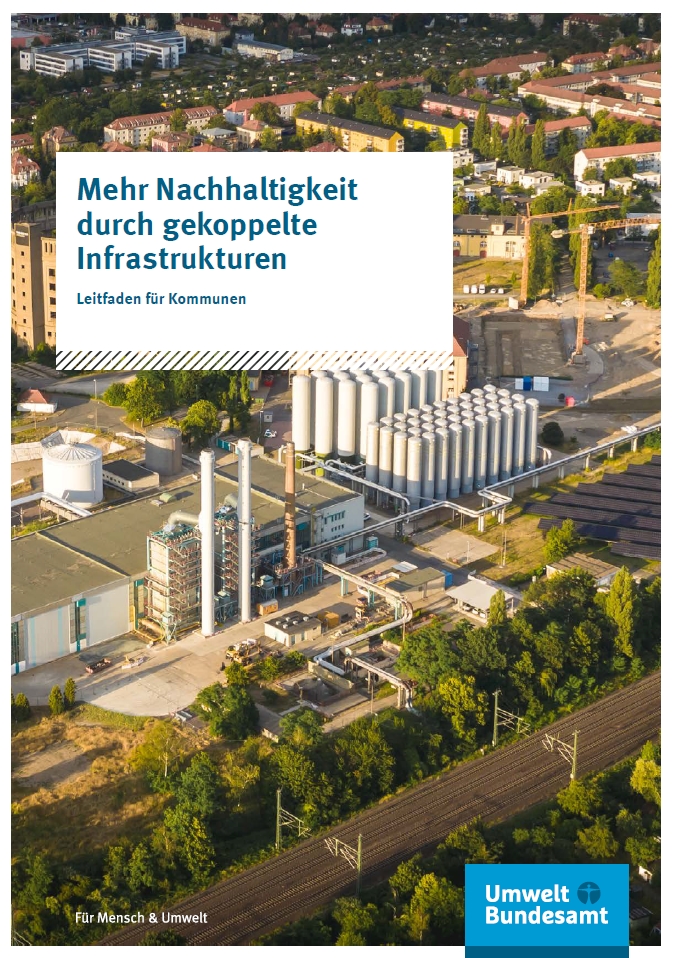Infrastrukturkopplungen als Beiträge zur Nachhaltigkeitstransformation: Einflussfaktoren und Handlungsmöglichkeiten
- Publication
- Citation
Hölscher, K., J.M. Wittmayer, A. Olfert, M. Hirschnitz-Garbers, J. Walther, B. Brunnow, G. Schiller, M. Hinzmann, S. Langsdorf, S. Albrecht, S. Maschmeyer, M. Müller, M. Hasenheit (2020). Infrastrukturkopplungen als Beiträge zur Nachhaltigkeitstransformation: Einflussfaktoren und Handlungsmöglichkeiten. Teilbericht des Vorhabens: "Transformation hin zu nachhaltigen, gekoppelten Infrastrukturen". UBA-Texte 100/2020, Umweltbundesamt, Dessau-Roßlau.
Coupled infrastructure innovations can support transformations towards sustainable and climate-resilient societies. Coupled infrastructures unlock opportunities for providing new services and improving the efficiency in service provisions. The coupling of heat grids with residual heat sources (e.g. server heat, sewage water heat) can support regional energy independence, reduce greenhouse gas emissions and stabilise the price of heat provisioning. However, the innovation of coupled infrastructures poses great challenges, because the design and use of existing infrastructure systems is deeply embedded in regulations, expectations and market structures.
This study identified the factors and activities influencing the implementation and diffusion of innovative coupled infrastructure projects. The primary objective was to derive effective action and support options for the federal government as well as for local and regional infrastructure planners to support innovative coupled infrastructures. To this end, we analysed the development pathways of nine examples of coupled infrastructure innovations, which cover the sectors energy, mobility, water and information and communication technology (ICT), from a transitions perspective. A development pathway describes the development of a coupled infrastructure from the initial idea until the current status. We analysed and compared which steps have been undertaken, which influencing factors and activities these involved, and what contribution is made to sustainability transitions. This enabled a comprehensive understanding of the development of coupled infrastructure innovations, including circumstances, influencing factors and time dynamics. We identified different intervention points and action opportunities to open up space for innovation, embed and scale the innovation, to position the innovation within sustainability transitions.
The report is available for download.




